What's New
Displaying results 3301 - 3310 of 4914
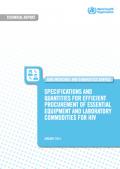
Resource | Publications,
The goal of this report is to provide countries and suppliers with a sense of how the global market for antiretroviral (ARV) medicines in low- and middle-income countries is likely to evolve from 2013 to 2016. The report also aims to provide suppliers with a global forecast of the estimated demand for active pharmaceutical ingredients (APIs) so that they can manage their manufacturing capacity accordingly.
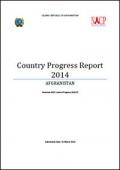
Resource | Publications,
Afghanistan was witness to considerable achievements in the past two years in response to HIV and AIDS which have been reflected in this report. This report will serve as a baseline for reporting on Global AIDS Response Progress Report (GARPR) indicators as a way to track Afghanistan progress and achieving declaration of commitment on HIV and AIDS. This gives the current state of the national response and progress towards achieving national targets for universal access to prevention, treatment, care and support in Afghanistan.
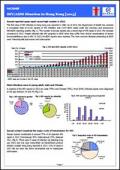
Resource | Fact Sheets,
The first case of HIV infection in Hong Kong was reported in 1984. As of 2013, the Department of Health has received a cumulative total of 6,342 reports of HIV infection and 1,437 AIDS cases under the voluntary and anonymous HIV/AIDS reporting system. The number of annual reports was a record high of 559 cases in 2013, 9% increase compared to 2012. People infected with HIV progress to AIDS when they suffer from clinical complications of severe immunodeficiency due to HIV. In 2013, 84 AIDS reports were received. The most common illnesses presenting at AIDS were Pneumocystis pneumonia and tuberculosis.
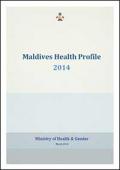
Resource | Publications,
The health care delivery system of Maldives is organized into a four-tier referral system with the island level health facilities referring patients to higher level health facilities in the atolls, regions and to central level depending upon the need and service availability. The government is committed to improving the health services in the country and improving the accessibility of services at the very peripheral levels, which due to the dispersed nature of the population in very small islands exerts diseconomies of scale. Having experienced several fall backs of the divided and corporatized health care delivery initiated in the year 2009, several steps has been taken to bring back the health facilities under the leadership of Ministry of Health and Gender but managed in a decentralized system. To provide financial security and ensure better access to healthcare, all citizens of the Maldives are now covered by a universal health insurance scheme "Aasandha", fully financed by the government.
This booklet intends to give a brief overview of the current health situation in the country including access to services and health resources.
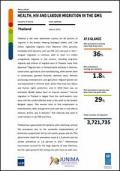
Resource | Publications,
Thailand is the main destination country for 60 percent of migrants in the Greater Mekong Subregion (GMS), with 1.48 million registered migrants from Myanmar (78.6 percent), Cambodia (10.9 percent), and Lao PDR (10.5 percent) in 2011.
Irregular migration is common, with at least 1.5 million unregistered migrants in the country, including long-term migrants and children of migrants born in Thailand, many from Myanmar. Migrant men in Thailand work primarily in fisheries, construction, agriculture, and manufacturing, while women work in construction, garment factories, domestic work, fisheries processing, entertainment, and agriculture. Migrant women are overrepresented in informal work, where they have less labour and human rights protection; and in 2010 there was an estimated 98,000 babies born to migrant women. Internal migration in Thailand is largely from the north-eastern rural areas and the conflict-affected areas in the south to the Greater Bangkok region. Thai women tend to find employment in entertainment, sales, and garment work and men in such jobs as cleaners, drivers, and in factories. Thai nationals also work in small numbers in Lao PDR and China.

Resource | Publications,
China is both a source and destination country for migration in the Greater Mekong Sub-region (GMS). Chinese migrants work in all GMS countries, primarily as professional or low-skilled workers employed in Chinese companies along the GMS economic corridors or as informal sector workers and small traders. From Yunnan province the largest migration is to Myanmar, with an estimated 2 million Chinese workers, followed by Laos PDR. As a destination country, China hosts migrants from all GMS countries. Yunnan province attracts a large number of migrants from Myanmar (an estimated 100,000 Burmese worked in two border towns in 2012) as well as from Viet Nam and Laos to work in agriculture, factories, construction, and trade – especially in border zones where migration is largely informal. Guangxi province attracts migrants mainly from Viet Nam in border trade zones, and increasingly other GMS countries, to work primarily in agriculture – including seasonal and processing work – and on construction projects.

Resource | Publications,
Kiribati is experiencing a low level general HIV epidemic. To date Kiribati has an estimated 55 cumulative cases of HIV dating from 1991 to the end of December 20131. The majority are males but there is increasing gender balance over the last decade. There are 23 confirmed AIDS related deaths four of which are children. Of the current estimated HIV positive cases (n=28), 6 are on antiretroviral treatment (ART).
This report was prepared through a consultative process involving key stakeholders from both Government and civil society. The Kiribati Country Coordinating Mechanism (CCM), as a GF‐governing body at country level was involved every step of the way through consultative meetings and interviews.

Resource | Publications,
Viet Nam is a source country for labour migration with extensive outmigration for Vietnamese workers to countries in Asia and worldwide, actively supported by the Vietnamese Government as a key economic development strategy. Within the Greater Mekong Sub-region (GMS), Vietnamese migration is largely irregular. Cambodia is the most popular destination, with an estimated 49,000 Vietnamese migrants in 20091 working in trades, services, and construction, and a further 1 million who relocated to Viet Nam between 1985 and 1998 and still have irregular status.

Resource | Publications,
The 2013 Country Progress Report for the Republic of Vanuatu on Global AIDS Response Progress Reporting (GARPR) covers the period January 2013 to December 2013. It is the fifth time Vanuatu has submitted a Country Progress Report.
This Country Report was prepared in a participatory manner and engaged a range of stakeholders, including government agencies, civil society, development partners and people living with HIV. Stakeholders attended meetings, filled in the National Commitments and Policy Instrument (NCPI) and attended a data validation workshop in Port Villa on 20th March 2014. A list of participants consulted in preparing this report is appended.
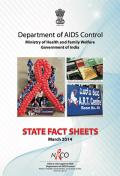
Resource | Fact Sheets,
Over the period 2012-2017, NACP IV aims to accelerate the process of reversal, further strengthening the epidemic response in India through a cautious and well-defined integration process. The main objectives of NACP-IV are to reduce new infections and provide comprehensive care and support to all PLHIV and treatment services to all those who require it. Formulating each of them is a rigorous process of undertaking research, reviewing evidence, consolidating field observations and programme experiences, conducting detailed discussions and deliberations, piloting and periodic evaluations.





